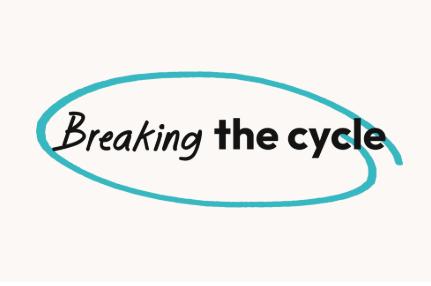Breaking the Cycle: Domestic Violence Awareness

Domestic violence is a pervasive issue that transcends cultural, economic, and social boundaries. It encompasses a range of abusive behaviors that occur within intimate relationships, including physical, emotional, psychological, and sexual abuse. The World Health Organization defines domestic violence as any behavior within an intimate relationship that causes physical, psychological, or sexual harm to those in the relationship.
This definition highlights the multifaceted nature of domestic violence, which can manifest in various forms and can affect individuals regardless of their gender, age, or socioeconomic status. The roots of domestic violence are complex and often intertwined with societal norms and values that perpetuate power imbalances. Many victims find themselves trapped in a cycle of abuse that is difficult to escape due to fear, financial dependency, or lack of support.
The abuser often employs tactics such as manipulation, intimidation, and isolation to maintain control over their partner. Understanding the dynamics of domestic violence is crucial for recognizing its prevalence and the urgent need for intervention and support systems that can help victims reclaim their autonomy and safety.
Recognizing the Signs of Domestic Violence
Recognizing the signs of domestic violence is essential for early intervention and support. While physical abuse is often the most visible form of domestic violence, many victims experience emotional and psychological abuse that can be equally damaging. Signs of emotional abuse may include constant criticism, humiliation, or threats that undermine a person’s self-worth.
Victims may also exhibit signs of anxiety, depression, or withdrawal from social activities as a result of their partner’s controlling behavior. Physical signs of domestic violence can range from unexplained bruises or injuries to more severe manifestations such as broken bones or head trauma. However, many victims may not report these injuries due to fear of retaliation or shame.
Additionally, behavioral changes in the victim can serve as red flags; for instance, they may become increasingly isolated from friends and family or exhibit signs of fear when their partner is present. Recognizing these signs is crucial for friends, family members, and colleagues who may be in a position to offer support or intervene on behalf of the victim.
The Impact of Domestic Violence on Victims
The impact of domestic violence on victims extends far beyond physical injuries; it can have profound psychological and emotional consequences that last long after the abuse has ended. Victims often experience feelings of shame, guilt, and worthlessness, which can lead to long-term mental health issues such as depression and anxiety disorders. The trauma associated with domestic violence can also result in post-traumatic stress disorder (PTSD), characterized by flashbacks, nightmares, and severe anxiety related to the traumatic events.
Moreover, the effects of domestic violence can ripple through various aspects of a victim’s life. Many victims struggle with maintaining employment due to the emotional toll of the abuse or may face challenges in parenting if they are raising children in an abusive environment. Children who witness domestic violence are particularly vulnerable; they may develop behavioral issues, emotional disturbances, or even perpetuate the cycle of violence in their future relationships.
The societal costs associated with domestic violence are staggering, encompassing healthcare expenses, legal fees, and lost productivity in the workplace.
Breaking the Cycle: Seeking Help and Support
Breaking the cycle of domestic violence requires courage and access to appropriate resources. Victims often face numerous barriers when seeking help, including fear of retaliation from their abuser, lack of financial independence, or uncertainty about where to turn for support. It is essential for victims to understand that they are not alone and that there are organizations and hotlines dedicated to providing assistance.
Many communities offer shelters where victims can find safety and support while they navigate their options. Support groups can also play a vital role in helping victims regain their sense of self-worth and empowerment. These groups provide a safe space for individuals to share their experiences and learn from others who have faced similar challenges.
Additionally, therapy or counseling can be instrumental in helping victims process their trauma and develop coping strategies for rebuilding their lives. Seeking help is a critical step toward breaking free from the cycle of abuse and reclaiming one’s autonomy.
How to Support a Loved One Experiencing Domestic Violence
Supporting a loved one who is experiencing domestic violence requires sensitivity, understanding, and a non-judgmental approach. It is crucial to create an environment where the victim feels safe discussing their situation without fear of blame or criticism. Listening actively and validating their feelings can help them feel understood and less isolated in their experience.
It is important to avoid making decisions for them; instead, empower them by providing information about available resources and options. Encouraging your loved one to seek professional help can also be beneficial. This might include suggesting therapy or connecting them with local support services that specialize in domestic violence.
However, it is essential to respect their autonomy and timing; they may not be ready to take action immediately. Offering practical support—such as helping them find safe housing or accompanying them to appointments—can also make a significant difference in their journey toward healing.
Legal and Practical Resources for Domestic Violence Victims
Legal Protections
Restraining orders or protective orders can legally prohibit an abuser from contacting or approaching the victim. These legal measures are crucial for providing immediate safety and can serve as a foundation for further legal action if necessary.
Specialized Support
Many jurisdictions have specialized courts that handle domestic violence cases, offering a more supportive environment for victims seeking justice. In addition to legal resources such as an Illawarra family law firm, practical assistance is available through numerous organizations dedicated to helping victims navigate their circumstances.
Practical Assistance
Hotlines provide immediate support and guidance on safety planning, while shelters offer temporary housing for those fleeing abusive situations. Many communities also have advocacy programs that assist victims in accessing healthcare services, family law representation, and financial assistance. Understanding these resources is vital for victims seeking to reclaim their lives and ensure their safety.
Education and Prevention: Promoting Healthy Relationships
Education plays a pivotal role in preventing domestic violence by fostering awareness about healthy relationships and respectful communication. Schools and community organizations can implement programs that teach young people about consent, boundaries, and conflict resolution skills. By instilling these values early on, we can help cultivate a generation that recognizes the importance of mutual respect in relationships.
Moreover, public awareness campaigns can challenge societal norms that perpetuate violence and promote harmful stereotypes about gender roles. Engaging men as allies in this effort is crucial; they can play an active role in advocating against domestic violence by modeling healthy behaviors and speaking out against abusive conduct within their communities. Prevention efforts must be comprehensive and inclusive, addressing the root causes of domestic violence while promoting a culture of respect and equality.
Advocacy and Activism: Taking a Stand Against Domestic Violence
Advocacy and activism are essential components in the fight against domestic violence. Grassroots organizations often lead the charge by raising awareness about the issue through campaigns, rallies, and educational initiatives. These efforts aim to mobilize communities to take action against domestic violence while pushing for policy changes at local, state, and national levels.
Individuals can also engage in advocacy by supporting legislation that protects victims’ rights and funding for services aimed at preventing domestic violence. Volunteering time or resources to local shelters or organizations dedicated to supporting survivors can make a tangible difference in the lives of those affected by abuse. By standing together as a community against domestic violence, we can create an environment where all individuals feel safe and empowered to seek help when needed.




